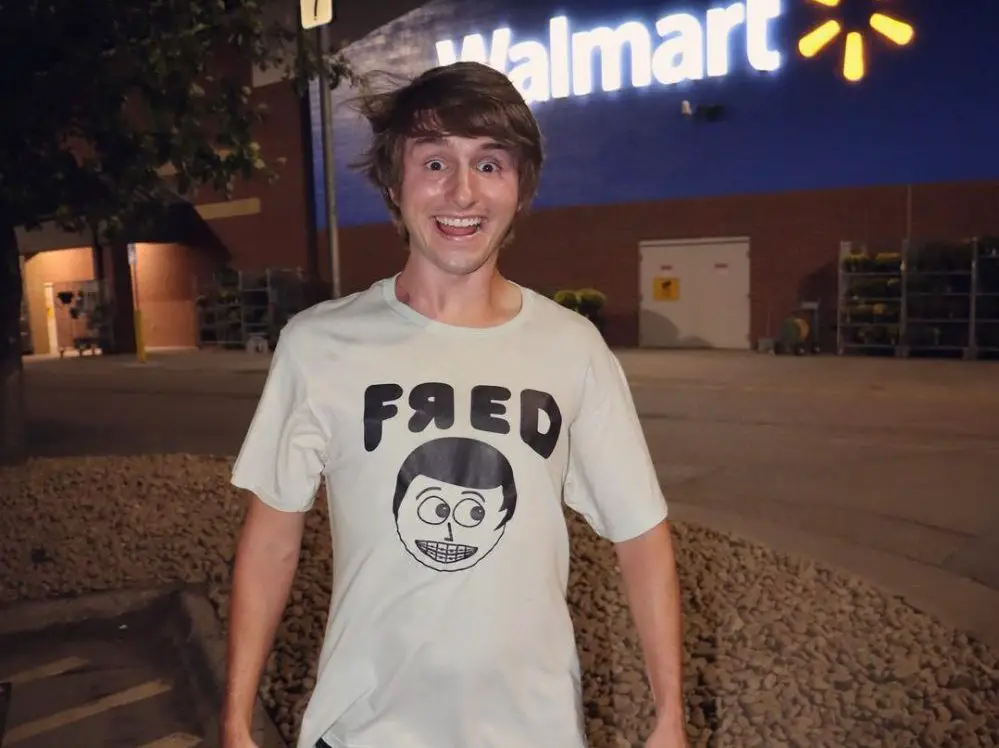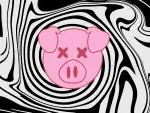During the late 2000s, teenager Lucas Cruikshank ran YouTube. Playing the volatile, hyperactive child Fred Figglehorn, the longtime internet celebrity quickly garnered a devoted following. In fact, due to Figglehorn’s extreme popularity, Cruikshank became the first person in the platform’s history to amass a million subscribers.
In June, YouTube commentator Quinton Reviews, or Quinton Hoover, uploaded a video titled “The Reign of Fred Figglehorn | Fallen Titans.” Hoover broke down the various phases of Cruikshank’s career as the “Fred” character and examined the current state of his channel. Watching the deep dive into Fred Figglehorn’s legacy makes viewers realize the true extent of Cruikshank’s fame.
However, audiences also ask themselves, “What exactly caused him to gain such universal recognition in the first place?”
His Market Appeal
Many onlookers wonder just how far Cruikshank’s fame extended in his prime; to convey the scope of the YouTuber’s celebrity, Hoover explained that the teen sensation received numerous sponsorships from various entities in the early stages of the “Fred” series.
In 2008, movie executives recruited Cruikshank to promote “City of Ember,” a science fiction adventure film. Hoover explained in his YouTube video that the young celebrity had his Fred Figglehorn character mention “Ember” in a skit and later posted an edited version of the motion picture’s trailer to his YouTube channel, inserting his face into random moments of the parody.
In an article from the Wall Street Journal, Peter Sanders discussed the intent behind the movie marketing campaign, and also pointed out that according to studio executives, “[Cruikshank] was on their radar earlier this year after they became aware of the wild success of the first season of ‘Fred’, which [he] posted on his YouTube channel in May.”
The movie received both an online ad campaign as well as a more traditional one that aired on television.
That same year Zipit Wireless, Inc. commissioned Cruikshank to promote their new product: the Z2, the second version of the original Zipit wireless messenger. The Zipit was a wireless device meant to message others instantly; however, customers needed a pre-existing account with a service like AIM or Yahoo Messenger to actually use the gadget. In many of the early “Fred” skits, Cruikshank heavily promoted the Z2.
“Despite being a show about a six-year-old being emotionally abused by his alcoholic mother, ‘Fred’ was something that brands found immediately appealing,” Hoover noted. “Perhaps just because it was one of the first in a new line of media.”
It seems like the combined novelty of Cruikshank’s online persona and the YouTube platform itself highly piqued the interests of companies that wanted to capitalize off of it.
“Fred: The Movie”
With Cruikshank’s popularity continuing to persist, people might ask themselves: Did he pursue any additional projects outside of YouTube? The answer is yes, and one of them is “Fred: The Movie.” In his analysis of the film, Hoover noted its reputation as both a critical failure and a commercial success.
https://www.youtube.com/watch?v=y75ERqdjmHE
Although adults and established reviewers trashed the movie and failed to understand the titular character’s appeal, ratings flew through the roof during its premiere.
A review from Peter Bradshaw of The Guardian supported Hoover’s statement: “If the only ‘Freds’ you are aware of are Astaire or Flintstone then I’m afraid that Fred: The Movie will come as a terrible shock.”
Another top critic described it as a “withering, unerringly precise satirical pastiche of the me-first ‘American Idol’ generation.”
Reviewers essentially considered “Fred: The Movie” a poorly executed, failed attempt at entertainment.
Despite the negative responses, it was the second-highest viewed TV cable movie of 2010, drawing an audience of 7.6 million total viewers — not too shabby for such a critically panned film.
Hoover provided a brief narrative of his experience with the movie: “Everyone I’ve spoken to about this — who was around at the time — remembers seeing this at some point. Hell, I remember sitting down to watch it and I was a cynical internet teen who thought he was above the culture.”
Hundreds of young people (Hoover included) have vivid memories of tuning in and watching the “Fred” film. However, it is crucial to understand why they tuned in in the first place.
The Heart of “Fred”
The “Fred” web series centered on Fred’s unpopularity at school, anger management problems and — most notably — his dysfunctional home life. His story heavily featured an alcoholic, emotionally distant mother and an absentee father. In many interviews, Cruikshank said he would receive thousands of emails from viewers who voiced their admiration for his character’s relatability, the show’s overarching storyline and the creator himself.
In his video, Hoover discussed a particularly fascinating note that “Fred: The Movie” writer David A. Goodman made on the DVD.
Supposedly, Goodman intended the film’s ending “to basically be the moment where [Figglehorn’s] life becomes [Cruikshank’s] life, where the lonely kid at school uses the power of the internet to create his own world — his own story — which blows up overnight and causes people to love and admire him.”
The second half of Goodman’s statement perfectly summarized why young people initially gravitated toward the young star’s YouTube channel. Cruikshank used the online world to cultivate a completely different, grittier world separate from his own. His fantastical yet relatable story blew up and garnered him a legion of fans that would last him quite a while.
As with any other viral sensation, many reasons exist for the rise of Fred Figglehorn. Recently, Cruikshank has retired from the role and launched his own successful YouTube channel, Lucas. However, regardless of the “Fred” YouTube channel’s inactivity, the titular character will remain a figure the world will never forget.

















